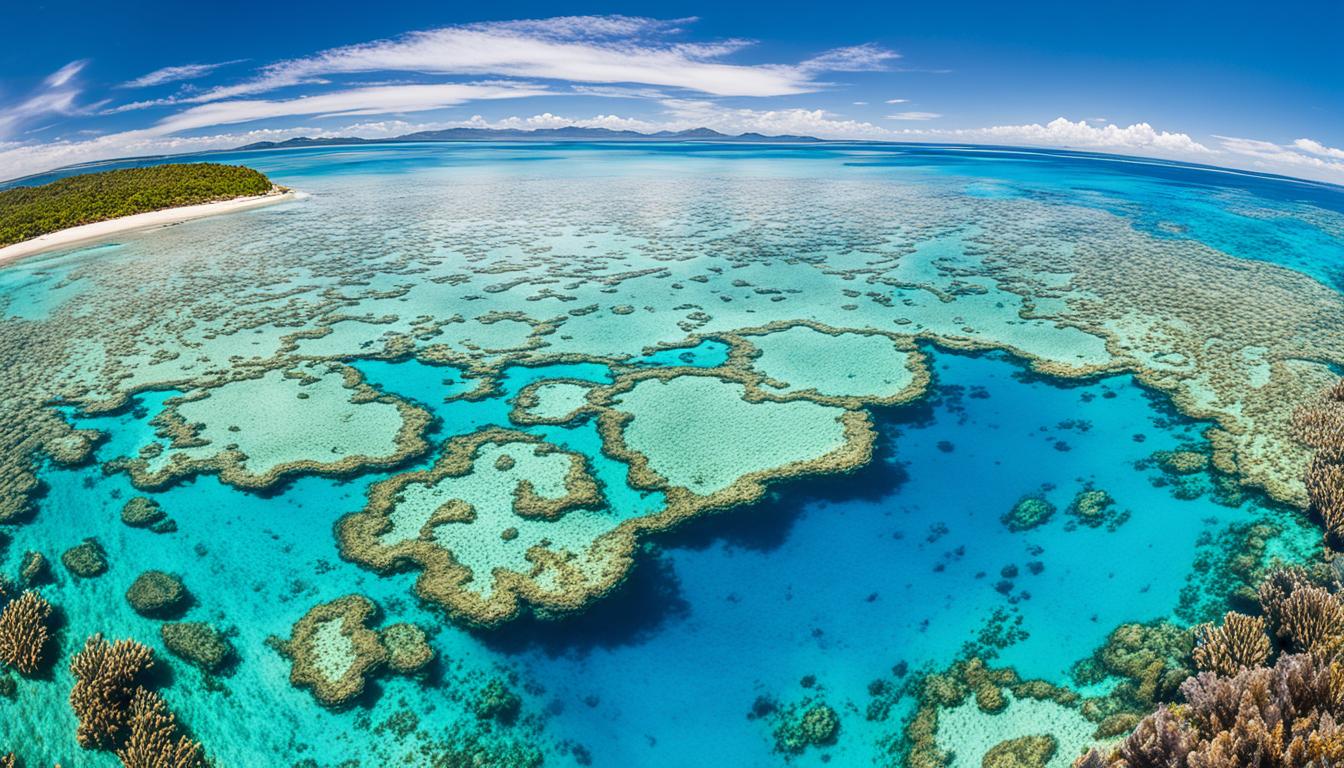Backpacking in Australia is an incredible adventure that offers stunning landscapes, vibrant cities, and unforgettable experiences. Whether you’re planning a solo trip or traveling on a budget, these essential top tips will help make your backpacking journey in Australia truly unforgettable.
When backpacking in Australia, it’s important to have a rough itinerary to ensure you make the most of your time in this vast country. While spontaneity is part of the backpacking experience, having a general plan will help you avoid missing out on must-see destinations.
Australia’s weather can vary greatly depending on the region, so it’s important to plan where to go when. While Australia is a great place to visit year-round, it’s best to avoid traveling north during the unbearably sticky “build-up” season before the wet season starts (November-March).
When backpacking in Australia, accommodation choice plays a crucial role in your experience. Staying in backpacker hostels is not only budget-friendly but also provides opportunities to meet fellow travelers and get valuable information from the staff.
Getting around in Australia can be done via various modes of transport. While flying is the easiest way to cover long distances, bus travel allows you to see more of the country and is more budget-friendly.
Australia has unique conditions that backpackers should be aware of. In summer, heatwaves and forest fires are frequent dangers, especially in the arid interior. Take necessary precautions if driving in remote areas.
While popular destinations like Sydney and the Great Barrier Reef are must-visit places in Australia, don’t be afraid to explore beyond the well-trodden path. There are hidden gems and alternative destinations waiting to be discovered.
Embracing the Aussie lingo and culture can enhance your backpacking experience in Australia. While you may not hear phrases like “fair dinkum” or “g’day Sheila” as often as you might expect, there are plenty of slang words and expressions that locals use.
Backpacking in Australia is a dream come true for many travelers. By following these essential top tips, you can make the most of your adventure Down Under. Plan your itinerary wisely, choose accommodation and transport that suit your needs, be prepared for Australian conditions, and embrace the local culture.
Key Takeaways:
- Plan a rough itinerary to ensure you don’t miss must-see destinations.
- Research the weather patterns of different regions to make the most of your time.
- Choose accommodation wisely, considering options like backpacker hostels, Airbnb, or campsites.
- Consider different modes of transport, such as flying, bus travel, or renting a car or camper van.
- Be prepared for Australian conditions, including heatwaves, forest fires, and unique wildlife encounters.
- Explore beyond the popular destinations and discover hidden gems.
- Immerse yourself in the Aussie lingo and culture to fully embrace the local experience.
Australia offers breathtaking landscapes, vibrant cities, and incredible experiences that will leave a lasting impression. So pack your backpack, get ready for an unforgettable journey, and immerse yourself in the beauty of Australia.
Plan a Rough Itinerary
When backpacking in Australia, it’s important to have a rough itinerary to ensure you make the most of your time in this vast country. While spontaneity is part of the backpacking experience, having a general plan will help you avoid missing out on must-see destinations.
For example, spending at least three weeks on the East Coast allows you to explore iconic places like Sydney, Byron Bay, Gold Coast, Whitsundays, and the Great Barrier Reef. Keep in mind that Australia is much larger than you may think, so flying or allowing more time is necessary to explore the rest of the country.
Plan Where to Go When
Australia’s weather can vary greatly depending on the region, so it’s important to plan where to go when. While Australia is a great place to visit year-round, it’s best to avoid traveling north during the unbearably sticky “build-up” season before the wet season starts (November-March). Instead, consider visiting the more temperate south during these months and save the north for the winter, which is generally quieter. Research the weather patterns of different regions to ensure you make the most of your time in Australia.
When planning your trip to Australia, it’s essential to consider the best time to visit based on the weather and travel seasons. The weather can vary significantly across different regions of the country, making it important to plan accordingly and make the most of your time. By understanding the climate patterns and seasons, you can ensure a more enjoyable and comfortable experience during your visit.
Weather Considerations:
Australia experiences seasons opposite to those in the northern hemisphere. The summer season in Australia runs from December to February, while winter lasts from June to August. Spring and autumn fall between these two seasons.
Best Time to Visit:
Generally, the best time to visit Australia is during the spring (September to November) and autumn (March to May) seasons. During these months, the weather tends to be mild and pleasant, making it ideal for outdoor activities and exploring the country’s natural wonders.
Choosing the Right Season for Different Regions:
It’s important to remember that Australia is a vast country with diverse landscapes and climates. Here are some considerations based on the regions you plan to visit:
1. East Coast:
The East Coast of Australia, including popular destinations like Sydney, Brisbane, and Cairns, is best visited during the spring and autumn seasons. Summers can be hot and humid, while winters are relatively mild.
2. Northern Australia:
Traveling to the northern parts of Australia, such as Darwin and the Great Barrier Reef, is best avoided during the wet season (November to March). This period is characterized by heavy rains, high humidity, and the possibility of tropical cyclones. It’s advisable to visit the north during the dry season (April to October) when the weather is more comfortable and the region is less prone to extreme weather events.
3. Southern Australia:
In southern regions like Melbourne, Adelaide, and Tasmania, the weather is generally milder, making it suitable for year-round visits. However, the summers can be hot, especially in areas like Adelaide and Melbourne, while winters can be cool in Tasmania. Spring and autumn offer pleasant temperatures and are popular for outdoor activities and exploring the region’s natural beauty.
In summary, planning your trip to Australia based on the weather and travel seasons can greatly enhance your experience. Consider the climate of different regions, choose the best time to visit based on your preferences, and explore the diverse landscapes of this beautiful country.
Choose Accommodation to Suit Your Needs
When backpacking in Australia, your choice of accommodation can significantly impact your overall experience. Consider various options that cater to different needs, from budget-friendly backpacker hostels to camping sites and Airbnb rentals.
Backpacker Hostels Australia
Staying in backpacker hostels is an excellent choice for budget-conscious travelers seeking a social and lively atmosphere. These hostels often offer dormitory-style rooms, communal areas, and organized activities, providing ample opportunities to meet fellow backpackers and form new friendships. Additionally, the hostel staff is usually well-informed about local attractions, transportation, and insider tips.
Camping in Australia
If you are a nature enthusiast or prefer a more outdoor experience, camping in Australia is a fantastic option. The country is home to numerous national parks, offering breathtaking landscapes and well-equipped campsites. You can immerse yourself in nature while enjoying facilities such as barbecues, toilets, and showers. Just remember to check if a camping permit is required in the area you plan to visit.
Airbnb Australia
For those seeking more privacy and comfort, Airbnb rentals are a popular choice. With diverse options available, from private rooms to entire properties, you can find accommodation that suits your preferences and budget. Airbnb listings often provide amenities such as kitchen facilities and laundry, offering a home-away-from-home experience during your backpacking journey.
Regardless of your chosen accommodation type, it is advisable to book in advance, especially during peak seasons and in popular destinations, to secure the best options available.
Choose Transport to Suit Your Needs
Getting around in Australia can be an exciting part of your backpacking adventure. With a vast and diverse landscape, there are plenty of transportation options to suit your needs.
If you’re looking to cover long distances quickly, flying is the easiest and most convenient option. Domestic airlines connect major cities and regional areas, allowing you to reach your destinations efficiently.
However, if you want to truly experience the beauty of Australia and take in the mesmerizing landscapes along the way, bus travel is a fantastic choice. Not only does it offer a more budget-friendly option, but it also allows you to see more of the country and discover hidden gems along the routes.
Consider traveling with Greyhound buses, a popular and reliable bus service that provides flexibility and a range of passes to suit your itinerary. Their hop-on hop-off passes allow you to explore at your own pace and make the most of your trip.
If you prefer the freedom to explore off-the-beaten-path destinations and have more flexibility in your itinerary, renting a car or camper van might be the perfect option for you. This allows you to have complete control over your travels and discover hidden treasures that aren’t accessible by public transportation.
When renting a car or camper van in Australia, be sure to familiarize yourself with the local driving rules and regulations. Remember, Australia is a vast country, and long journeys are inevitable. However, the breathtaking landscapes and unique experiences you’ll encounter along the way will make it all worthwhile.
So, whether you choose to fly, take a bus, or rent a car or camper van, transportation in Australia offers endless possibilities and unforgettable adventures.
Comparison of Backpacking Transportation Options in Australia
| Transportation Option | Advantages | Disadvantages |
|---|---|---|
| Flying | – Fastest way to cover long distances – Convenient and time-saving |
– Limited scenic views – Expensive compared to other options |
| Bus Travel | – More budget-friendly – Allows exploration of scenic routes – Opportunity to interact with fellow travelers |
– Longer travel times compared to flying – Less flexibility in terms of schedules |
| Car Rental/Camper Van | – Freedom to explore off-the-beaten-path destinations – Flexibility in itinerary – Unique and immersive experience |
– Additional costs such as fuel and insurance – Requires familiarity with local driving rules |
Be Prepared for Australian Conditions
Australia is a land of unique conditions that backpackers should be aware of during their adventure. From the diverse climate to the captivating wildlife, it’s essential to be prepared for all that Australia has to offer. Here are some key tips to keep in mind:
1. Australian Climate
The Australian climate varies significantly across the country, so it’s crucial to understand the weather patterns of your intended destination. In summer, heatwaves and forest fires are frequent dangers, especially in the arid interior. It is essential to stay updated on local weather forecasts and take necessary precautions if driving in remote areas. Always carry plenty of water, dress appropriately for the weather, and have a plan in case of extreme heat.
2. Australian Wildlife
Australia boasts a diverse range of wildlife, including snakes, sharks, crocodiles, and spiders. While encounters with dangerous animals are rare, it’s important to take simple precautions to ensure your safety. When exploring the bush, wear protective footwear to reduce the risk of snake bites. When swimming, always pay attention to any warning signs and swim between the flags on patrolled beaches. Familiarize yourself with local wildlife safety tips to coexist with the unique animals found in Australia.
3. Backpacking Safety Tips
Backpacking safety should always be a priority, no matter where you’re traveling. In Australia, it’s important to be streetwise in cities and inform others of your whereabouts. Stay alert and be cautious of your surroundings, especially in unfamiliar areas. Carry a copy of your important documents, such as your passport, and use a money belt to keep your valuables safe. Consider investing in travel insurance to provide additional peace of mind during your journey.
“Australia’s unique conditions offer both challenges and incredible experiences for backpackers. Take the time to understand the climate, respect the wildlife, and prioritize your safety. By being prepared, you can truly enjoy all that this remarkable country has to offer.”
Whether you’re exploring the vibrant cities or venturing into the wild, being prepared for Australian conditions is essential for a successful backpacking trip. Take the necessary precautions, stay informed, and go on your adventure with confidence, knowing you’re ready to embrace the beauty of Australia.
Explore Beyond the Well-Trodden Path
While popular destinations like Sydney and the Great Barrier Reef are must-visit places in Australia, don’t be afraid to explore beyond the well-trodden path. There are hidden gems and alternative destinations waiting to be discovered. For example, the Ningaloo Reef on the remote West Coast offers a stunning reef experience that comes right to the shore. By venturing off the beaten path, you can have unique and unforgettable experiences that many tourists miss out on.
Discover Hidden Gems
When exploring off-the-beaten-path Australia, you’ll uncover hidden gems that reveal the true magic of the country. From secluded beaches with pristine white sand to untouched national parks teeming with wildlife, these hidden treasures offer a glimpse into the undiscovered beauty of Australia.
“Venturing off the beaten path allows you to experience Australia’s hidden gems and connect with nature in a way that’s truly special.”
Alternative Destinations
Choosing alternative destinations in Australia can lead you to lesser-known but equally stunning locations. Swap bustling cities for charming small towns, dive into serene lakes instead of crowded beaches, and uncover cultural experiences in off-the-beaten-path communities.
- Visit the Blue Mountains in New South Wales for breathtaking views and untouched wilderness.
- Explore the Kangaroo Island in South Australia for unique wildlife encounters.
- Discover the Daintree Rainforest in Queensland, the oldest tropical rainforest in the world.
Uncover the Undiscovered
By venturing off the beaten path, you have the opportunity to uncover the undiscovered Australia. These hidden corners of the country offer a sense of solitude and serenity, allowing you to immerse yourself in the natural beauty without the crowds.
“Venturing off the beaten path in Australia is like opening a treasure chest of undiscovered wonders just waiting to be explored.”
Explore beyond the well-trodden path and discover the hidden gems, alternative destinations, and undiscovered Australia that await you. By embracing adventure and stepping off the beaten path, you’ll create memories that will last a lifetime.
Embrace the Aussie Lingo and Culture
Embracing the Aussie lingo and culture can enhance your backpacking experience in Australia. While you may not hear phrases like “fair dinkum” or “g’day Sheila” as often as you might expect, there are plenty of slang words and expressions that locals use. Familiarize yourself with common Australian terms and phrases to fully immerse yourself in the local culture.
Australians are known for their laid-back and friendly nature, so embrace their lifestyle and enjoy the unique experiences this country has to offer.
Familiarize yourself with common Australian terms and phrases to fully immerse yourself in the local culture.
Learn the Aussie Slang
When backpacking in Australia, you’ll often come across unique slang words and expressions. Here are some common examples:
- Barbie – barbecue
- Arvo – afternoon
- Brekky – breakfast
- Mate – friend
- Fair dinkum – genuine, true
- No worries – no problem
By learning and using these slang words, you’ll be able to communicate more effectively with Australians and feel more integrated into the local culture.
Immerse Yourself in Australian Customs
Australian culture is diverse and influenced by a mix of Indigenous heritage, British roots, and multiculturalism. To embrace the Australian culture during your backpacking journey, consider the following customs:
- Be prepared for a casual and laid-back atmosphere. Australians value a relaxed lifestyle, so embrace this attitude and enjoy the slower pace of life.
- Show respect to Indigenous cultures. Australia has a rich Indigenous history, and it’s important to learn about and respect the traditions and customs of the First Nations people.
- Participate in local activities and festivals. Australians love to celebrate, so join in on events like Australia Day, Anzac Day, and local music festivals to experience the vibrant culture firsthand.
- Try Australian cuisine. From Vegemite to Tim Tams, Aussie food is a unique blend of flavors. Embrace the local food scene and indulge in some classic Australian dishes.
By following these customs, you’ll have a deeper appreciation for Australian culture and create meaningful connections with locals along your backpacking journey.
A Memorable Backpacking Experience Awaits
Embracing the Aussie lingo and culture is an essential part of immersing yourself in the Australian backpacking adventure. From learning the slang to participating in local customs, embracing the Australian lifestyle will make your journey even more memorable.
Conclusion
Backpacking in Australia is a dream come true for many travelers. By following these essential top tips, you can make the most of your adventure Down Under. Plan your itinerary wisely, choosing the best time to visit each region and ensuring you don’t miss out on must-see destinations. Whether you’re exploring the stunning beaches on the East Coast, diving into the vibrant city life, or embarking on an off-the-beaten-path adventure, Australia offers something for every backpacker.
When it comes to accommodation, consider staying in backpacker hostels for budget-friendly options and opportunities to meet fellow travelers. If you prefer more privacy, look into Airbnb or camping options. And don’t forget to book in advance, especially during peak seasons.
Transportation plays a crucial role in your backpacking journey. Flying is the fastest way to cover long distances, while bus travel allows you to see more of the country. Renting a car or a campervan provides flexibility and allows you to explore off-the-beaten-path destinations. Regardless of your choice, be prepared for long journeys and mesmerizing landscapes.
Australia has unique conditions, from its diverse climate to its remarkable wildlife. Research the weather patterns of different regions and be aware of safety precautions. Embrace the local culture by learning some Aussie slang and customs. Australians are known for their laid-back and friendly nature, so immerse yourself in the adventure and make lifelong memories. Backpacking in Australia is truly an unforgettable experience.






Very interesting details you have observed, regards for posting.Raise range